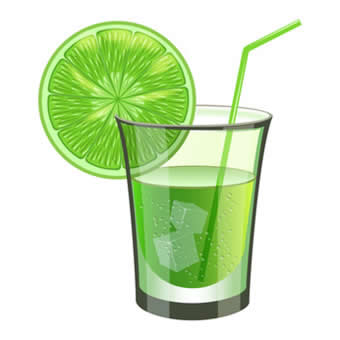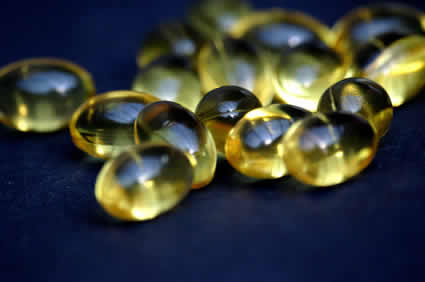The grapefruit (Citrus paradisi Macfad) is a large orange-like fruit that belongs to the citrus family. Fruit grows in varieties of pink/red, yellow, white or ruby color. The pink or red varieties are higher in vitamin content.
Grapefruit Benefits
Fresh squeezed grapefruit juice contains vitamin C. Vitamin-C is a potent antioxidant and helps the body develop resistance against infectious agents and scavenge harmful free radicals. The fruit contains very good levels of vitamin-A, and flavonoid antioxidants such as naringenin, and naringin. Vitamin A intake supports your immune system, helps maintain healthy retinas and acts as an antioxidant in body. Grapefruit is a good source of potassium. Potassium, is one of several electrolytes that sustain fluid levels and electrical activity in your body. Insufficient potassium can result in an irregular heartbeat, known as arrhythmia. Potassium is an important component of cell and body fluids, helps controlling heart rate and blood pressure through countering sodium effects.
 The vitamin C and the antioxidant properties protect the skin from environmental hazards. It also stimulates the production of skin collagen that brings smoothness and elasticity to the skin. “Grapefruit is loaded with vitamin C, a mild acid, which helps fade spots by reducing excess production of skin pigment,” says Jessica Wu, MD, a Los Angeles–based dermatologist.
The vitamin C and the antioxidant properties protect the skin from environmental hazards. It also stimulates the production of skin collagen that brings smoothness and elasticity to the skin. “Grapefruit is loaded with vitamin C, a mild acid, which helps fade spots by reducing excess production of skin pigment,” says Jessica Wu, MD, a Los Angeles–based dermatologist.
Grapefruit is a source of fiber. This fruit contains high level of pectin which acts as a bulk laxative and helps to protect the colon mucous membrane by decreasing exposure to toxic substance in the colon. Fiber is necessary to promote regular bowel movements and to prevent constipation.
Grapefruit juice helps increase your urinary pH value, which significantly lowers risk of calcium oxalate stones forming in the kidney. A study reported in the “British Journal of Nutrition” demonstrated that drinking 2-4 cups daily of grapefruit or orange juice reduced the risk of developing kidney stones.
Red varieties of grapefruits are particularly rich in the most strong flavonoid antioxidant, lycopene. This carotenoid is believed to have potent antioxidant effects with some studies showing a reduced risk of cancer, cardiovascular disease and macular degeneration. The optimum dosage for lycopene has not been established, but the amount found useful in studies usually fell in the range of 4 to 8 mg daily. In a study reported in the March 2005 edition of International Journal of Cancer, scientists found that prostate cancer risk declined with increased consumption of lycopene. Lycopene has shown promise for leukoplakia. In a clinical trials, 58 participants with oral leukoplakia received either 8 mg oral lycopene daily, 4 mg daily, or placebo capsules for 3 months. Subjects were then followed for an additional two months. The results showed that lycopene in either dose was more effective than placebo for reducing signs and symptoms of leukoplakia, and that 8 mg daily was more effective than 4 mg.
Naringenin, a flavonoid concentrated in grapefruit, helps repair damaged DNA in human prostate cancer cells. A study that was reported in the “Journal of Nutritional Biochemistry” shows that grapefruits help repair damaged DNA in human prostate cancer cells. A group of phytonutrients in grapefruits called limonoids help prevent tumors by promoting an enzyme that causes the liver to expel more toxins from the body. In animal-based studies and lab tests with human cells, limonoids have been shown to help fight cancers of the mouth, skin, lung, breast, stomach and colon. Limonoids help control the activity of genes in cancer cells, activating genes that promote cancer cell death, according to a research reported in the Journal of Biological Chemistry in 2011. Research indicate that drinking grapefruit juice everyday helps reduce the activities of enzymes that can activate cancer triggering chemicals found in cigarette smoke. In humans, drinking three 6-ounce glasses of grapefruit juice a day was shown to reduce the activity of an enzyme that activates cancer-causing chemicals found in tobacco smoke.
 Pomegranate juice contributes curing and preventing cardiovascular disease. Studies demonstrate that the different and high antioxidant content decreases inflammation and thickening of the artery walls. Researchers attribute heart healthy benefits to polyphenols, including anthocyanins, which are plant pigments that give the pomegranate its red hue. A study reported in “Proceedings of the National Academy of Sciences” found that pomegranate juice combats hardening of the arteries and related diseases like heart attacks and strokes. Researchers in Israel have shown that drinking a daily glass of the fruit’s juice can reduce the risk of cardiovascular disease.
Pomegranate juice contributes curing and preventing cardiovascular disease. Studies demonstrate that the different and high antioxidant content decreases inflammation and thickening of the artery walls. Researchers attribute heart healthy benefits to polyphenols, including anthocyanins, which are plant pigments that give the pomegranate its red hue. A study reported in “Proceedings of the National Academy of Sciences” found that pomegranate juice combats hardening of the arteries and related diseases like heart attacks and strokes. Researchers in Israel have shown that drinking a daily glass of the fruit’s juice can reduce the risk of cardiovascular disease.  Nuts, like almonds, hazel nuts, Brazil nuts, peanuts, walnuts and cashews can all play a role in reducing the risk of heart disease, according to a Harvard review. Walnuts are a good source of the healthy fat alpha linolenic acid. (One-quarter cup of walnuts provides all the alpha linolenic acid you need in a day). New researches have associated a higher intake of alpha linolenic acid to a reduced risk of heart disease and heart attack in men. One study looked at nuts rich in alpha linolenic acid (ALA), like walnuts, and found that they had a heart-protective effect during times of acute stress. A meta-analysis reported in the new ssue of the “American Journal of Clinical Nutrition” evaluates how the plant-based omega-3 fatty acid ALA offers protective effects on cardiovascular diseases. The study found ALA to be linked with a lower risk of cardiovascular diseases, especially coronary heart disease death.
Nuts, like almonds, hazel nuts, Brazil nuts, peanuts, walnuts and cashews can all play a role in reducing the risk of heart disease, according to a Harvard review. Walnuts are a good source of the healthy fat alpha linolenic acid. (One-quarter cup of walnuts provides all the alpha linolenic acid you need in a day). New researches have associated a higher intake of alpha linolenic acid to a reduced risk of heart disease and heart attack in men. One study looked at nuts rich in alpha linolenic acid (ALA), like walnuts, and found that they had a heart-protective effect during times of acute stress. A meta-analysis reported in the new ssue of the “American Journal of Clinical Nutrition” evaluates how the plant-based omega-3 fatty acid ALA offers protective effects on cardiovascular diseases. The study found ALA to be linked with a lower risk of cardiovascular diseases, especially coronary heart disease death. Scientists at the “University of Pennsylvania” found that supplement with borage oil resulted in a important reduction in the swelling of affected arthritic joints. The use of borage oil allowed patients to reduce their intake of mainstream NSAIDS, therefore minimizing the adverse effects related with these drugs. Also, animal-based studies using borage oil indicated that the GLA content protects the lining of the stomach against the effects of NSAIDS and aspirin. GLA may help reduce pain, stiffness, and swelling. One study found that participants with RA (rheumatoid arthritis) who took 2.8 g of gamma linolenic acid for 6 months reduced pain and swelling and improved their grip strength. 64% of those on borage oil demonstrated improvement in joint tenderness and morning stiffness, compared to just 21% of those on placebo treatment. A randomized controlled study investigated the use of borage oil in 37 participants with RA and active synovitis. After 24 weeks, the group that received 1.4 g of GLA daily had a important decline in the number of tender joints and swollen joints. In another study, 1.1 g of borage oil was given to seven patients with rheumatoid arthritis for 12 weeks. Six of the seven patients with RA reported relief of their symptoms.
Scientists at the “University of Pennsylvania” found that supplement with borage oil resulted in a important reduction in the swelling of affected arthritic joints. The use of borage oil allowed patients to reduce their intake of mainstream NSAIDS, therefore minimizing the adverse effects related with these drugs. Also, animal-based studies using borage oil indicated that the GLA content protects the lining of the stomach against the effects of NSAIDS and aspirin. GLA may help reduce pain, stiffness, and swelling. One study found that participants with RA (rheumatoid arthritis) who took 2.8 g of gamma linolenic acid for 6 months reduced pain and swelling and improved their grip strength. 64% of those on borage oil demonstrated improvement in joint tenderness and morning stiffness, compared to just 21% of those on placebo treatment. A randomized controlled study investigated the use of borage oil in 37 participants with RA and active synovitis. After 24 weeks, the group that received 1.4 g of GLA daily had a important decline in the number of tender joints and swollen joints. In another study, 1.1 g of borage oil was given to seven patients with rheumatoid arthritis for 12 weeks. Six of the seven patients with RA reported relief of their symptoms.